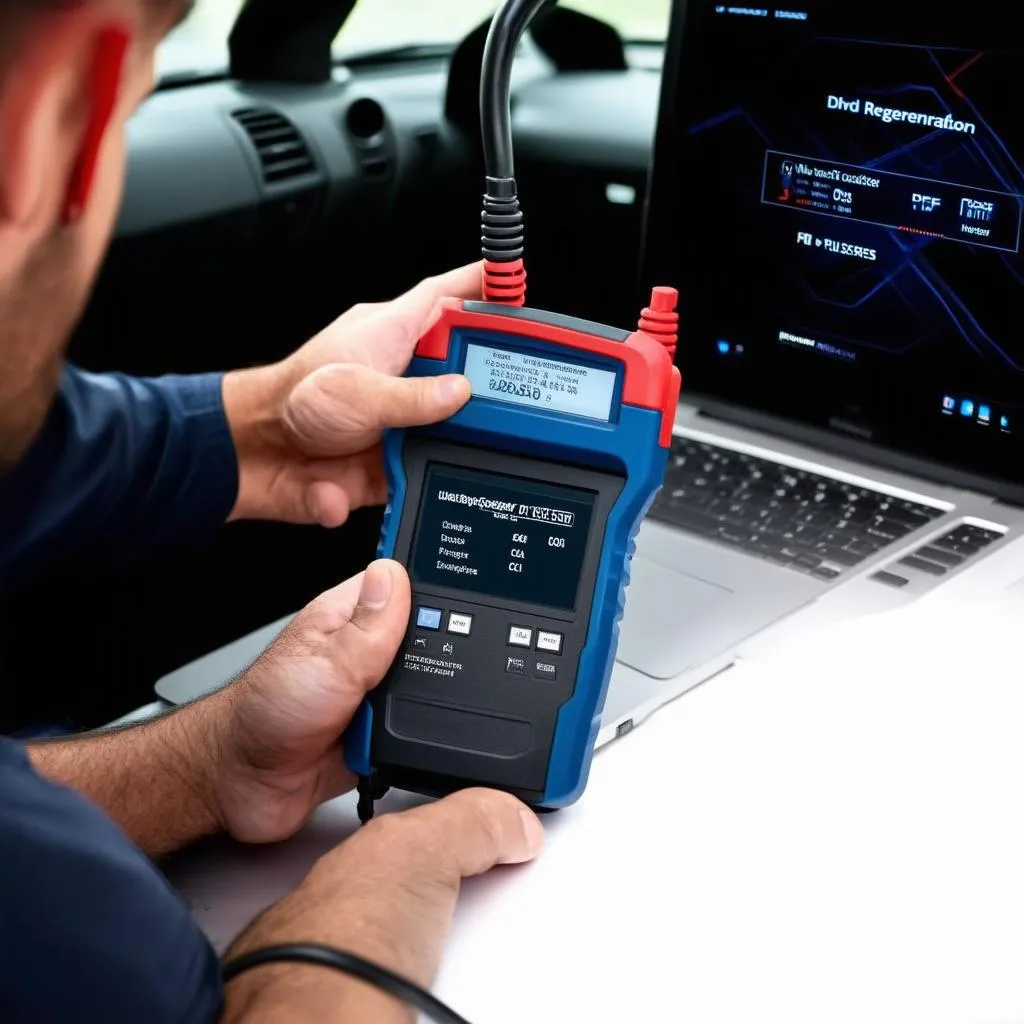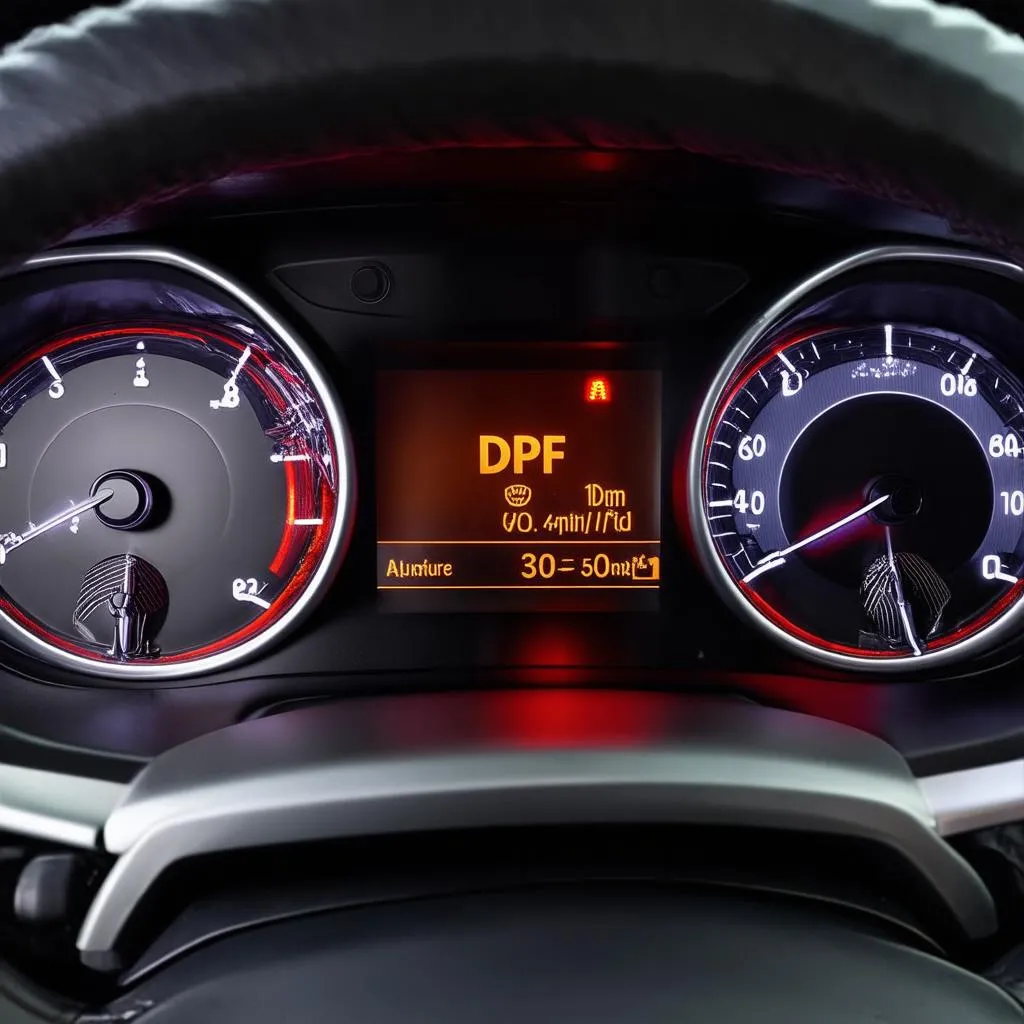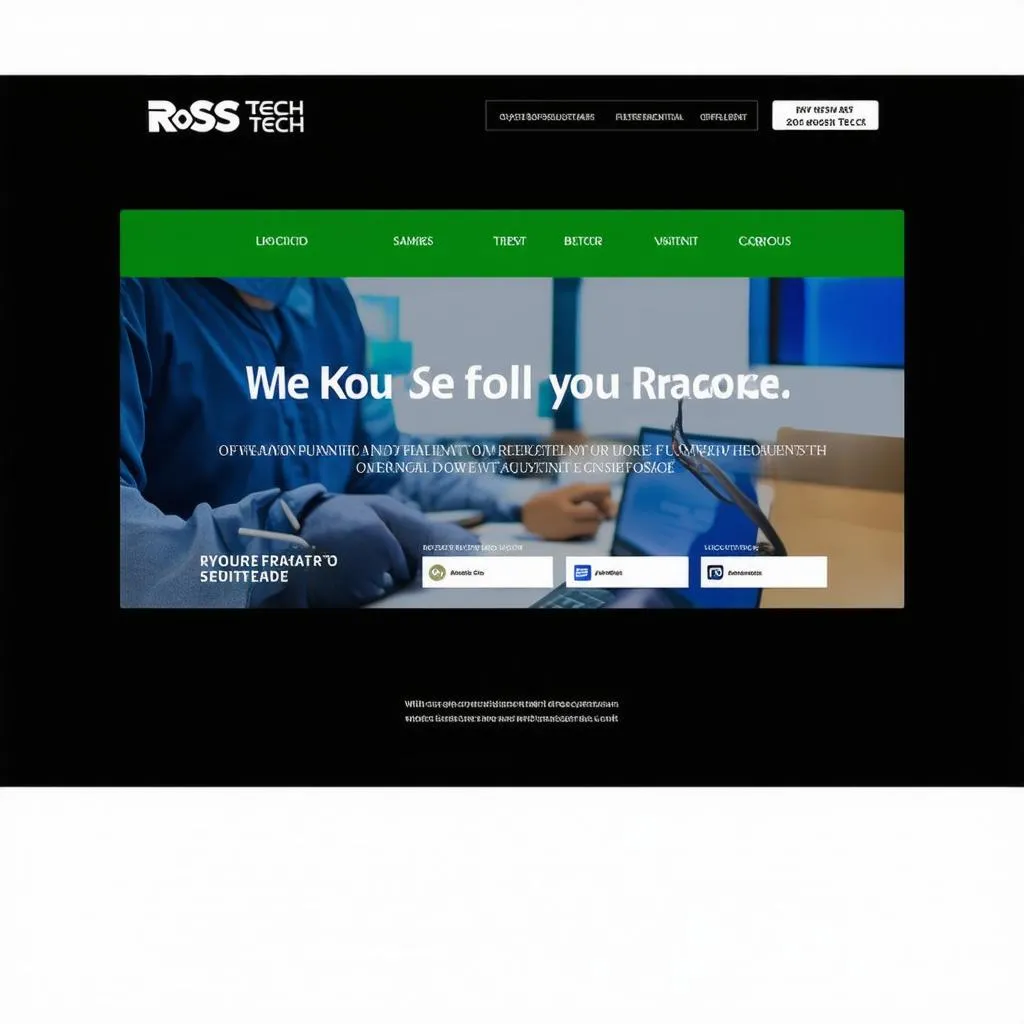Diesel Particulate Filters (DPFs) are a crucial part of modern diesel engines, designed to trap harmful soot particles from the exhaust gas. However, over time, these filters can become clogged, impacting engine performance and emissions. This is where a VCDS DPF regeneration comes in, and yes, it can be done while driving!
As an automotive electrical expert, I often get asked about using a VCDS (VAG-COM Diagnostic System) for DPF regeneration, particularly the process and safety of performing it on the go. This article aims to provide a detailed guide, answering all your questions.
Understanding DPF Regeneration with VCDS
A VCDS is a powerful diagnostic tool for Volkswagen Audi Group (VAG) vehicles. It allows access to the car’s ECU (Engine Control Unit) to perform various functions, including initiating a DPF regeneration.
Why Regenerate?
DPF regeneration essentially burns off the accumulated soot, turning it into ash and releasing it through the exhaust. When the DPF becomes too clogged, it can lead to:
- Reduced engine performance
- Increased fuel consumption
- Triggering of the DPF warning light on your dashboard
- Potential engine damage in severe cases
Regeneration Types
There are two primary types of DPF regeneration:
- Passive Regeneration: This happens automatically during normal driving conditions, particularly highway driving, when the exhaust temperature is high enough to burn off the soot.
- Active Regeneration: This is a forced regeneration initiated by the ECU either automatically (based on sensor readings) or manually using a diagnostic tool like VCDS.
VCDS DPF Regeneration While Driving: Is It Safe?
The short answer is yes, it is generally safe to perform a VCDS DPF regeneration while driving. In fact, it’s often the recommended method, as it ensures the engine reaches and maintains the optimal temperature for a successful regeneration.
Why Driving is Recommended:
- Optimal Temperature: Driving at moderate speeds (around 40-50 mph) ensures the exhaust system reaches the required temperature (around 600°C or 1112°F) to burn off the soot effectively.
- Interruption Avoidance: Stopping the regeneration process mid-cycle can interrupt the burn-off and potentially lead to more severe DPF clogging. Driving minimizes this risk.
Important Note:
Always prioritize safety. If you encounter any warning lights or unusual engine behavior during the regeneration process, pull over safely and consult a qualified mechanic or your dealership.
 VCDS DPF Regeneration
VCDS DPF Regeneration
Performing a VCDS DPF Regeneration While Driving
Here’s a step-by-step guide:
- Safety First: Ensure you’re driving in a well-ventilated area, ideally on a highway or open road.
- Connect VCDS: Connect your VCDS interface to your car’s OBD-II port and your laptop.
- Launch VCDS Software: Open the VCDS software on your laptop and establish communication with your vehicle.
- Navigate to Engine Module: Select the “Engine” control module from the list of available modules.
- Select “Basic Settings”: Choose the “Basic Settings” option within the Engine module.
- Initiate Regeneration: Locate the option for “DPF Regeneration” or a similar term within the Basic Settings. Follow the on-screen prompts to start the regeneration process.
- Monitor Progress: The VCDS software will display the progress of the regeneration. You may notice changes in engine sound, a slight increase in RPM, and potentially a temporary decrease in fuel economy.
- Drive Until Completion: Continue driving until the VCDS software indicates that the regeneration process is complete. This usually takes around 20-30 minutes.
Pro Tip: Some experts, like Dr. Andreas Schmidt, author of “Advanced Automotive Diagnostics,” recommend maintaining an engine speed of around 2000-2500 RPM during the regeneration process for optimal results.
FAQs about VCDS DPF Regeneration
Here are some common questions and answers:
Q: How often do I need to regenerate my DPF?
A: This varies depending on driving conditions and vehicle model. Typically, passive regeneration happens automatically every 300-500 miles. However, if you frequently drive in city traffic or for short distances, you may require an active regeneration sooner.
Q: Can I interrupt a VCDS DPF regeneration while driving?
A: It’s not recommended. Interrupting the process can cause incomplete soot burn-off and potential DPF damage.
Q: What if the regeneration fails?
A: If the regeneration fails to complete, it could indicate a more serious issue with your DPF system. In such cases, it’s crucial to contact a qualified mechanic or your dealership immediately.
 DPF Warning Light
DPF Warning Light
Alternative DPF Regeneration Methods
While VCDS offers a DIY approach, other methods for DPF regeneration exist:
- Dealership Service: Dealerships have specialized equipment for forced regeneration.
- Aftermarket Additives: Certain fuel additives can help lower the soot burning temperature, aiding passive regeneration.
Cardiagtech: Your Source for Automotive Diagnostic Solutions
Cardiagtech offers a wide range of high-quality automotive diagnostic tools and software, including VCDS systems. Whether you’re a seasoned professional or a DIY enthusiast, Cardiagtech provides the resources you need to keep your vehicle running smoothly. Check out their website for more information on VCDS systems and other diagnostic solutions.
Conclusion
Understanding VCDS DPF regeneration is essential for maintaining the health and performance of your diesel engine. Using the VCDS system for DPF regeneration while driving is generally safe and effective, but remember to prioritize safety and consult a professional if you encounter any issues. If you’re looking for reliable diagnostic tools and expert advice, Cardiagtech has you covered.
For more in-depth guides on using VCDS for various vehicle models, explore these resources:
If you have any further questions or need personalized assistance, don’t hesitate to contact the experts at Cardiagtech.


